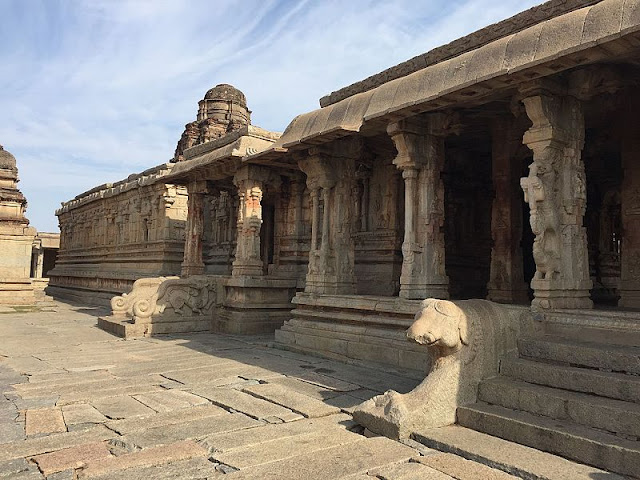Q.1. Who among the following was the Delhi Sultanate ruler when the Vijayanagara Empire came into existence?
(a) Muhammad bin Tughlaq
(b) Giyas-ud-din Tughlaq
(c) Firoz Shah Tughlaq
(d) Khizr Khan
Q.2. Which of the foreign travelers had visited the Vijayanagara empire during the reign of Krishnadevaraya?
(a) Duarte Barbosa
(b) Domingo Paes
(c) Abdur Razzaq
(d) Both a and b
Q.3. Which of the following Vijayanagara rulers had earned the title of Purvapaschima Samudradhishavara?
(a) Deva Raya II
(b) Virupaksha Raya
(c) Krishnadeva Raya
(d) Harihara I
Q.4. Which of the following was a bone of contention between Vijayanagara empire and Bahmani Sultanate?
(a) Bijapur
(b) Gulbarga
(c) Raichur Doab
(d) Golconda
Q.5. The correct chronological order in which the following dynasties of the Vijayanagara empire were established:
(i) Saluva Dynsty
(ii) Tuluva dynasty
(iii) Sangama Dynasty
(iv) Aravidu dynasty
(a) II, I,III,IV
(b) II, I, IV,III
(c) I, II, IV,III
(d) III, I, II, IV
Q.6. Krishnadevaraya’s reign spanned the years from --------- to -------------.
(a) 1501-1520
(b) 1505-1526
(c) 1509-1529
(d) 1510-1530
Q.7. Who was the last king of Sangama Dynasty?
(a) Praudha Raya
(b) Virupaksha Raya II
(c) Mallikarjuna Raya
(d) Deva Raya II
Q.8. Which of the following Vijaynagar ruler had taken the title of 'Gajabetekara (the elephant hunter)'?
(a) Bukka Raya II
(b) Deva Raya II.
(c) Virupaksha Raya II
(d) Harihara Raya II
Q.9. Which Bijapur Sultan was defeated by Krishnadevaraya in the battle of Raichur?
(a) Yusuf Adil Shah
(b) Ismail Adil Shah
(c) Ibrahim Adil Shah I
(d) Ali Adil Shah I
Q.10. In the court of which of the following rulers did Ashtadiggajas flourish?
(a) Deva Raya II
(b) Harihara I
(c) Krishnadevaraya
(d) Bukka Raya II
Answers
1-a
Notes
During his reign Muhammad bin Tughluq had to encounter as many as thirty four rebellions, twenty seven of them in the south. Vijayanagar Empire came into existence at the cost of Sultanate territory during the rule of Muhammad bin Tughlaq.
The rule of Muhammad bin Tughlaq lasted from 1325 to 1351. The Vijayanagara Empire was founded in 1336.
2-d
Notes
In April 1443, Abdur Razzaq also visited Vijayanagar during the reign of Devaraya II.
Duarte Barbosa was a Portuguese traveller who came to Vijayanagar during the reign of Krishnadeva Raya.
Domingo Paes was a Portuguese traveler who visited Vijayanagar during the reign of its greatest ruler Krishnadeva Raya in 1520.
3-d
Notes
Harihara I, the founder of Vijayanagara kingdom, had earned the title of Purvapaschima Samudradhishavara ("master of the eastern and western seas").
4-c
Notes
Raichur Doab is the region between the Tungabhadra and Krishna rivers. Thanks to its being a fertile land, Raichur Doab was a bone of contention between the rulers of the Vijayanagar and the Bahmani kingdom.
5-d
Sangama Dynasty was founded in 1336. Saluva dynasty was founded in 1885. Tuluva dynasty was founded in 1491.
6- c
Krishnadeva Raya ruled from 1509 to 1529.
7-a
Notes
Praudha Raya was the last king of Sangama Dynasty.
8-b
Notes
Deva Raya II who ruled from 1424 to 1446 was the greatest ruler of the Sangama dynasty of Vijaynagar. He is known for his title Gajabetegara (a hunter of elephant).
9-b
Notes
Krishnadevaraya had inflicted a crushing defeat on Isma'il 'Adil Shah of Bijapur on the 19th March, 1520.
10-c
Notes
The court of Vijayanagara emperor Krishnadevaraya was adorned by the 'Ashtadiggajas'' (eight elephants), a collective title given to his eight Telugu scholars and poets whose contribution the world of Telugu literature is immense.


.jpg)





